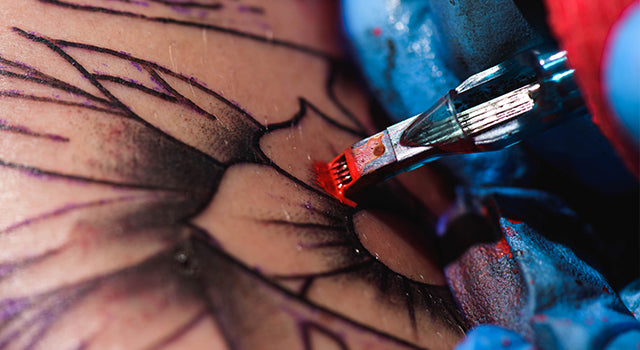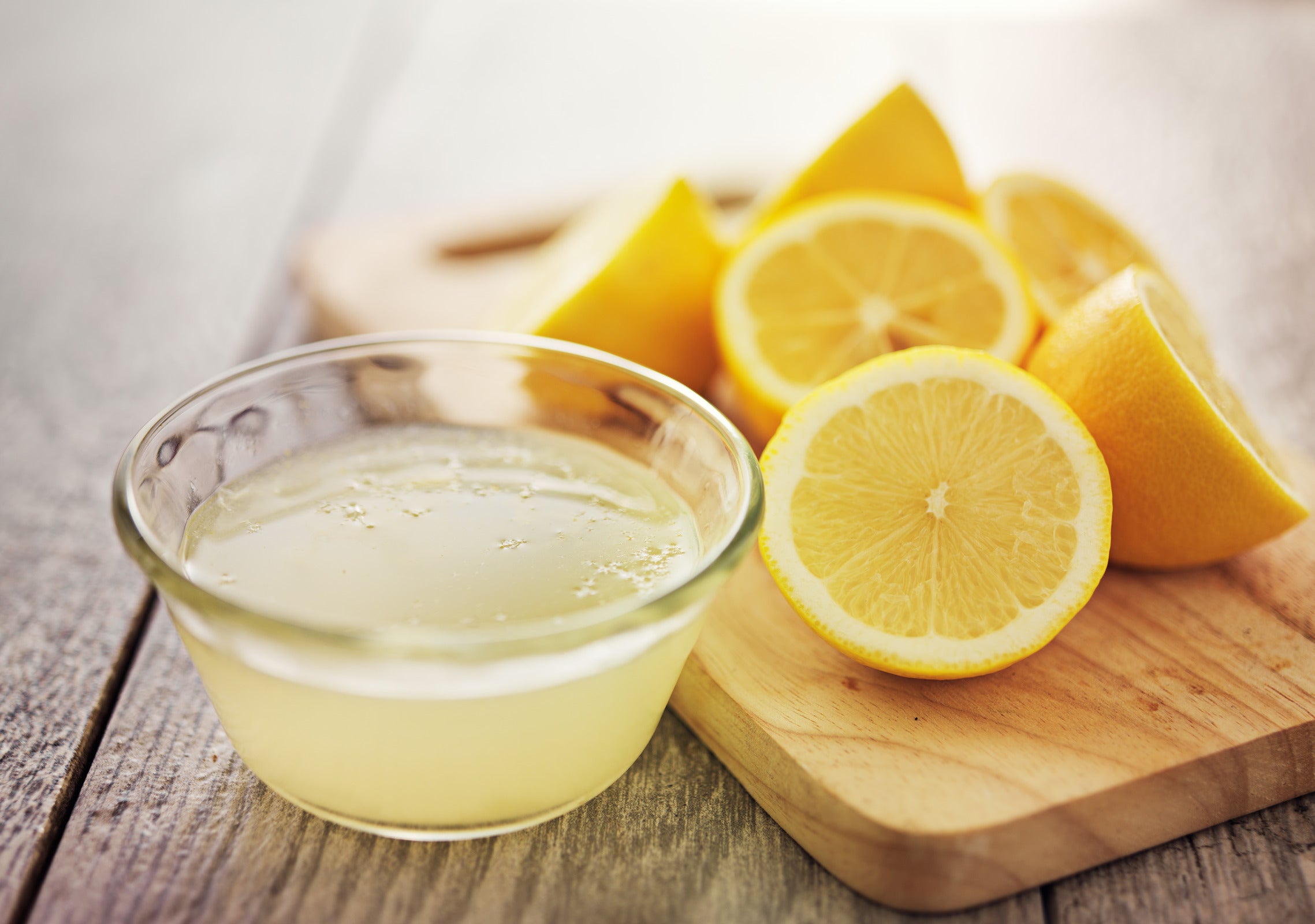Lip tattoos are a popular trend these days, and while they may seem like a cool and edgy way to show off your style, they can be a pain to maintain. There are a few different methods you can try to get rid of your lip tattoo.
In this blog post, we'll share some of the most effective and safe ways, such as laser removal, saline solution, and excision, to remove a lip tattoo, ensuring you can get your lips back to their original state with no hassle.
How To Get Rid Of A Lip Tattoo: 3 Methods

Lip tattoos are now sought after by many individuals who wish to have a permanent lip liner or tint. Most permanent inner lip tattoos last between two and three years, sometimes longer. But with time, people who have undergone this cosmetic procedure may feel the need to have their lip tattoos removed. There are several methods for eliminating lip tattoos that are safe and effective. Here are the most popular ways for lip tattoo removal:
Laser Removal
Laser tattoo removal targets the tattoo ink pigments with a focused beam of light. This light is absorbed by the ink, causing it to break down into smaller particles. Our body’s immune system then removes these smaller particles through the natural healing process. This method requires several sessions to complete tattoo removal, each spaced over several weeks.
Pros
- It’s effective for most tattoo colors.
- Laser removal works without causing much damage to the surrounding skin.
- It’s relatively non-invasive compared to other methods.
Cons
- It can be painful, especially for those with a low pain threshold.
- Laser removal can be expensive.
- Multiple sessions may be needed to remove the tattoo altogether.
Saline Solution
Regarding tattoo removal, saline solution is a popular choice because of its safety and effectiveness. It is a non-toxic and non-invasive solution that can help remove tattoo pigment from the skin. During the procedure, a technician will inject saline solution into the skin using a tattoo needle or a similar device. The saline solution breaks up the ink particles in the skin and causes them to fade.
Pros
- No scarring: unlike laser tattoo removal, saline solution removal does not cause scarring.
- Less painful: while the procedure can be uncomfortable, it is less painful than laser tattoo removal.
- Cost-effective: saline solution removal is usually more affordable than other tattoo removal methods.
- It is suitable for all skin types and colors.
Cons
- Time-consuming: the procedure may take several sessions to remove the tattoo fully.
- Not suitable for all tattoos: saline solution removal is most effective for small tattoos with light ink pigments. It may not be effective for larger or darker tattoos.
- Side effects: Removing lip tattoos with saline solution may cause blistering, swelling, and infection.
- Results may take time.

Excision
This is a surgical procedure that requires a local anesthetic, where the professional numbs the affected area before the operation begins. The surgeon uses a scalpel or specialized surgical tools to cut out the inked area of the lip. Depending on the tattoo's size, the surgeon may need to remove the skin from the surrounding area to ensure that the incision site will close correctly. After the procedure, the wound will be sutured closed, and the patient will need to take care of the wound to ensure proper healing.
Pros
- Surgical excision is one of the most effective ways to remove a tattoo.
- The results are immediate, and the tattoo completely disappears when the wound heals.
- Excision is a one-time procedure; in contrast, other treatments like laser may require multiple sessions to achieve the desired results.
- Excision is a relatively standard procedure and can be performed by an experienced surgeon.
Cons
- Excision is an invasive surgical procedure that comes with risks such as infection or adverse reactions to anesthesia.
- The healing process can be uncomfortable and may require several weeks of recovery.
- Surgical excision can leave a scar, depending on the size and location of the tattoo, which may be more noticeable than the tattoo itself.
Cover-Up Tattoo
Cover-up tattoos entail concealing the original tattoo with a fresh design, offering a viable choice for individuals seeking to replace it with a design that better aligns with their style.
Pros
Cover-up tattoos offer a convenient and cost-effective solution for replacing lip tattoos. They are also a more accessible alternative to laser removal, making them popular for people seeking a fresh tattoo.
Cons
There are drawbacks to ponder. Concealing tattoos may work well only for specific lip tattoos, notably very dark or large ones. Moreover, locating a proficient tattoo artist with expertise in cover-up tattoos might pose a challenge.
Lip Tattoo Removal: Home Remedies And Risks

When removing a lip tattoo, home remedies seem like an affordable and straightforward solution. It's essential to understand the potential risks and dangers associated with attempting to remove a tattoo at home.
Home Remedies
Lemon Juice
This citrus fruit is known for its acidic properties, which can help fade a tattoo over time. Mix lemon juice with salt on the tattooed area, leaving it on for several minutes before wiping it off.
Salt
Mix salt with lukewarm water and apply it to the tattooed area. Rub the mixture onto the skin gently using a soft cloth, repeating the process until the tattoo fades away.
Aloe Vera
This plant is known for its healing properties and is often used to treat skin issues. Apply fresh aloe vera gel onto the tattooed area, massaging it gently into the skin. Leave it on briefly before rinsing it off with lukewarm water.

Risks
While these home remedies may seem easy, they are not without risks and dangers. Some potential problems with removing a lip tattoo at home include
- Skin irritation and redness.
- Scarring.
- Infection.
- Allergic reactions.
Professional Help
You should seek professional help when attempting to remove a lip tattoo at home because of the risks involved. Among the reasons are:
- Professionals have the expertise and experience to work safely and effectively.
- They use the latest techniques and equipment for removing tattoos.
- They can perform the procedure safely and minimize the risk of complications.
- They can advise you on the best action based on your skin condition and tattoo type.
Aftercare

It’s essential it is to care for your skin afterward. By following some simple aftercare steps, you can help ensure that your skin stays healthy and that you achieve the best possible results.
Cleaning the Affected Area
One of the most crucial steps after lip tattoo removal is to clean your skin properly. Be sure to use mild, unscented soap and warm water to remove dirt and bacteria from the area. Avoid using abrasive or scented products, as they can irritate your skin and increase your risk of infection.
Moisturizing
Apply moisturizer to the affected area after cleaning your skin. This can help soothe skin and prevent dryness, which is common after lip tattoo removal. Use a gentle, fragrance-free moisturizer and apply it in a thin layer two to three times a day.
Ice Packs
The treated area can be reduced in swelling and discomfort by using ice packs. Several times a day, wrap a clean cloth around the ice pack and hold it against your lips for 10-15 minutes.
Avoid Sun Exposure
Sun exposure can harm the skin after lip tattoo removal. The laser treatment used during the removal process can make your skin more sensitive, and exposure to UV rays can cause further damage. Avoid direct sunlight and wear protective clothing, including hats and long sleeves.

Proper Diet and Hydration
A healthy, well-balanced diet can help promote healing after lip tattoo removal. Ensure to drink plenty of water and eat various nutritious foods, including fruits, vegetables, lean proteins, and whole grains. Avoid alcohol and caffeine, as they can dehydrate you and slow down the healing process.
Follow Post-Removal Instructions
After removal, the provider will provide specific instructions, such as avoiding certain activities or applying an ointment. It's essential to follow these instructions closely to ensure a smooth healing process.
Conclusion
The decision to remove a lip tattoo requires careful consideration and research. A qualified professional should carry out any lip tattoo removal process to avoid potential risks. To ensure a smooth recovery and the best possible outcome, proper aftercare instructions are also required. Always prioritize your safety and well-being when choosing laser removal, saline solution, or excision.













![Antibiotics and Tattoos: 3 Risks and 3 Effects [with 4 Precautions]](http://drnumb.com/cdn/shop/articles/Can_You_Get_Tattooed_On_Antibiotics__3_Risks_and_3_Effects_4_Precautions.jpg?v=1714128292)

